Scott Almes, a game designer also known for Tiny Epic Kingdoms, has designed this compact worker-placement game about being an entrepreneur in a fantasy port city. Harbour will be published by Tasty Minstrel Games, and just launched its Kickstarter campaign today.
At a glance: Harbour is for 2 to 4 players, ages 8 and up, and takes about 20-30 minutes to play. There is a free print-and-play version available here, and it’s a $20 pledge for the game. If you pledge before Wednesday, you’ll get the “early bird special” which includes a pack of card sleeves. I think the game isn’t too difficult to learn, but less experienced players may have a hard time juggling resources to match the market values, so 8 is probably as young as you’ll want to go.
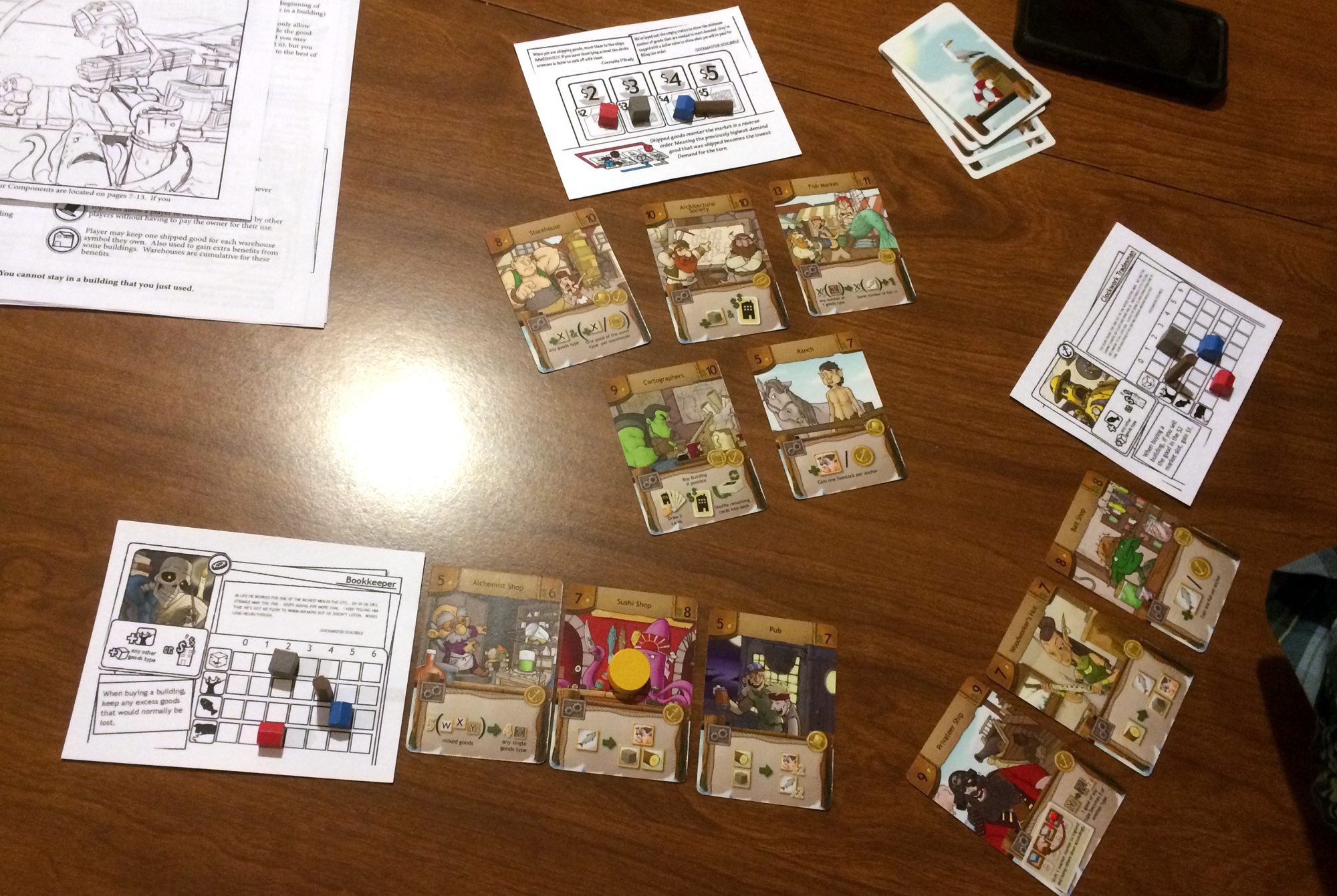
Components:
The version I played was an unfinished prototype with substitute bits, but here’s what will come in the final version:
- 7 Player boards/starting buildings
- 36 Building cards
- 1 Market board
- 4 sets of goods trackers (one set per player)
- 4 sets of player markers
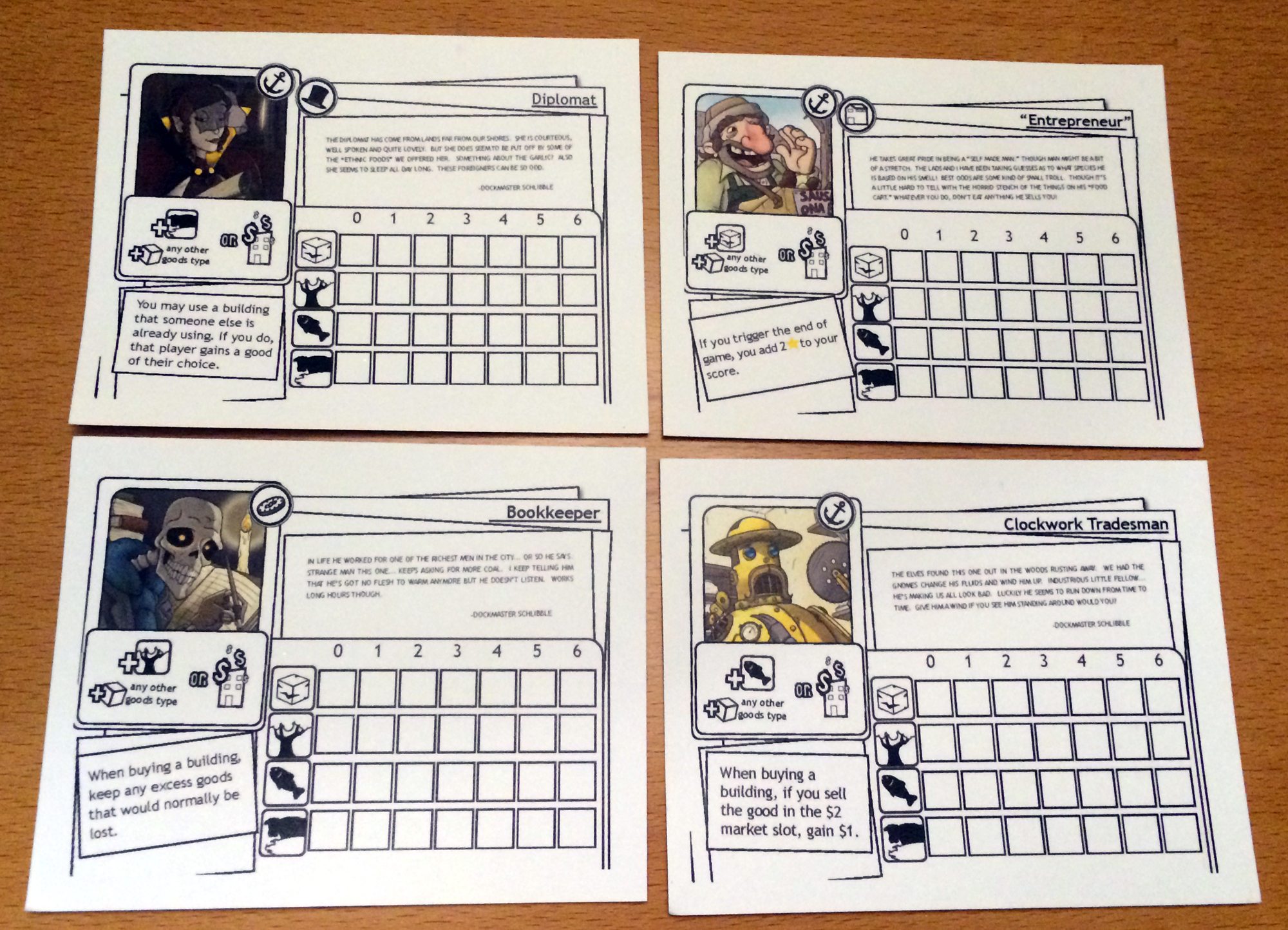
The player boards have a starting building in the top left section, which also has the character’s portrait. Each character also has a special ability (printed below the building), and a little flavor text about the character. Finally, there’s a section to track how many of the four different goods you currently own.
The market board has spaces for the four goods, showing how much you’ll get for selling each type of good (as well as the minimum number of that good you must sell). The prototype had an explanation of how to move goods around, but it was a little confusing at first. The final artwork shown on the Kickstarter page (and above) is a lot more straightforward.
The buildings are cards, with cost in one corner, victory points in another corner, and then an action at the bottom. The buildings also have various gold icons on them that can provide bonuses to the owner of the building. The artwork is by Rob Lundy, who has also illustrated a few other Tasty Minstrel games like Dungeon Roll and This Town Ain’t Big Enough for the 2-4 of Us.
How to Play
The object of the game is to score the most points, which you get by buying buildings.
Each player starts with a player board, their pawn, and the goods trackers. You start with 3 total resources of your choice, marked on your board. The building cards are shuffled, and you deal out cards in the center of the table until you have three more than the number of players.
On each turn, you move your pawn to a vacant building—either on a player board, in the center of the table, or a building owned by any player. If it’s owned by another player, you have to give them 1 resource of your choice. Then, you take that building’s action.
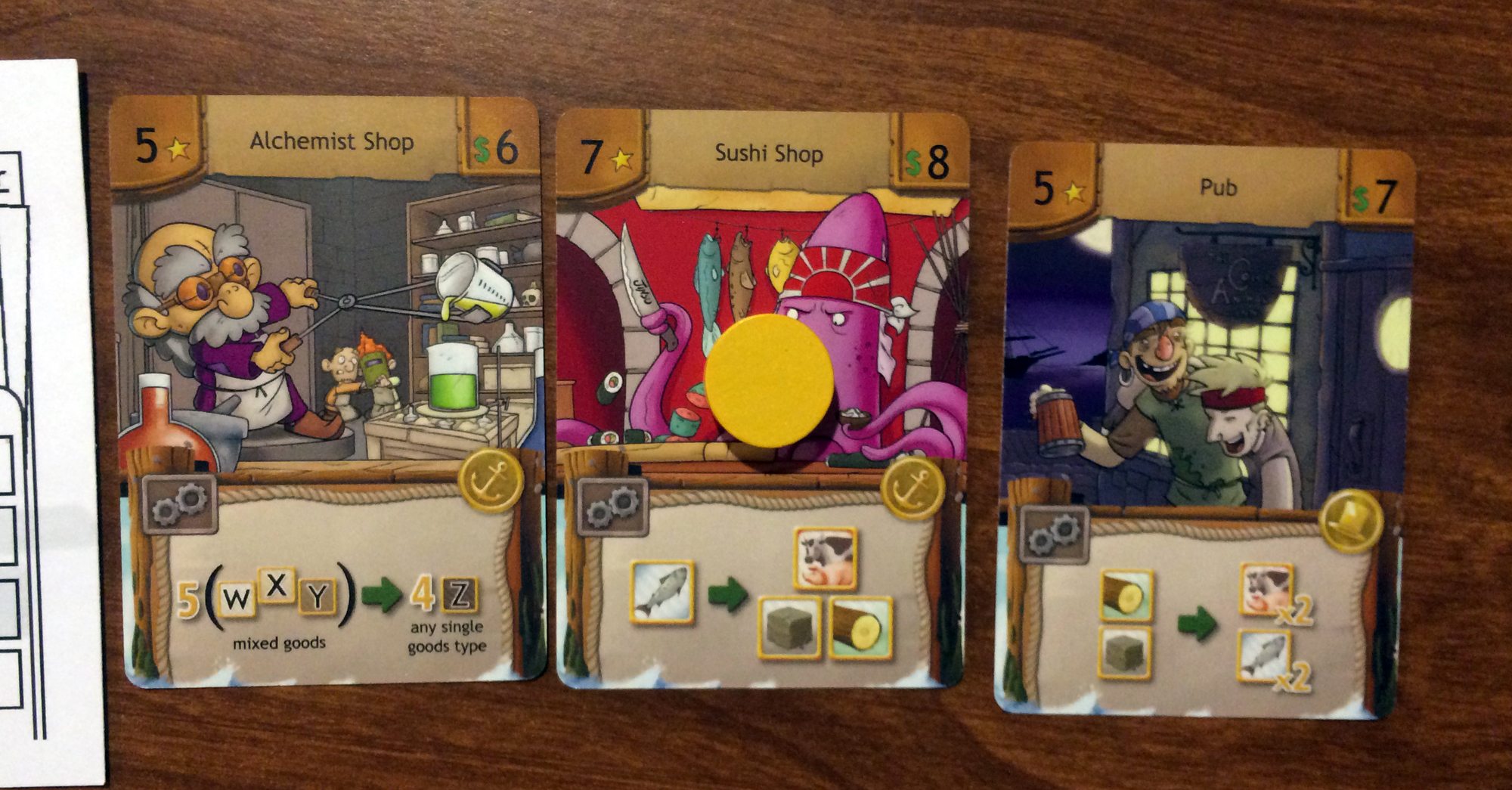
The various buildings have different actions—many allow you to gain goods, or convert goods into other goods. For instance, the Sushi Shop pictured above lets me turn 1 fish into 1 stone, 1 wood, and 1 livestock. The Alchemist Shop, next to it, lets me turn any 5 resources into 4 of the same resource. There are other actions as well, such as manipulating the market board or affecting other players’ goods.
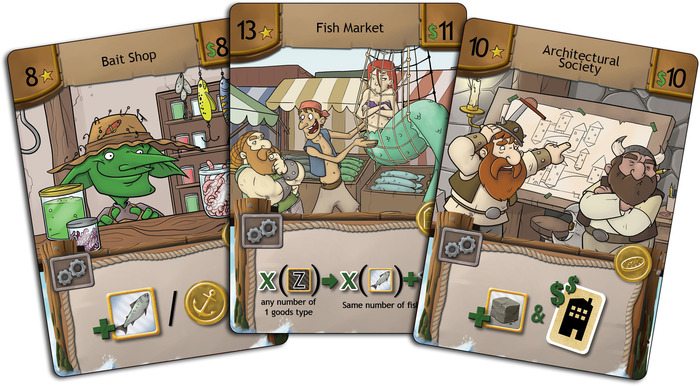
Some buildings have a “buy a building” action on them. If you do that, then you may ship goods, and then use the money earned to buy a building. (You don’t actually get to keep the money—it’s immediately spent on a building, and anything left over is “lost in the transaction to legal fees and taxes.”)

If you’re buying a building, then you’ll refer to the market board, which shows the prices for the four different goods. The price also reflects the minimum number you need to sell—2 of the $2 good, 3 of the $3 good, and so on. So if wood is in the $5 space (as pictured above), you must have at least 5 wood. You must sell all of it (losing whatever extra you have), and then you’d get $5 total. You could also sell stone for $3, if you have at least 3 stones. Again, if you have any extra stones, they’re lost. Then you could buy any building that is $8 or less, and put it next to you. A new building is drawn from the deck to replace the purchased one.
When you sell a good, you move the goods tracker from the crates to the ship on the market board. This helps you remember which things you’ve sold and how much money you have. Once you’re done purchasing, the market shifts: all of the goods that were not sold slide over to the right, and then the goods on the ships fill back in. This represents demand going down because you just sold a bunch of goods.
The icons on the buildings give you bonuses:
- Coin: Each Coin on a building you own reduces the price of buildings by $1.
- Top Hat: A Top Hat lets you use buildings owned by other players without paying the owner.
- Warehouse: When you ship goods, each Warehouse on an building you own lets you keep one of the shipped goods
- Anchor: Anchors give bonuses for using certain buildings.
Once a player has purchased their 4th building, every player gets one more turn, and then the game is over. Total up the victory points across all your buildings, and the player with the highest total wins.
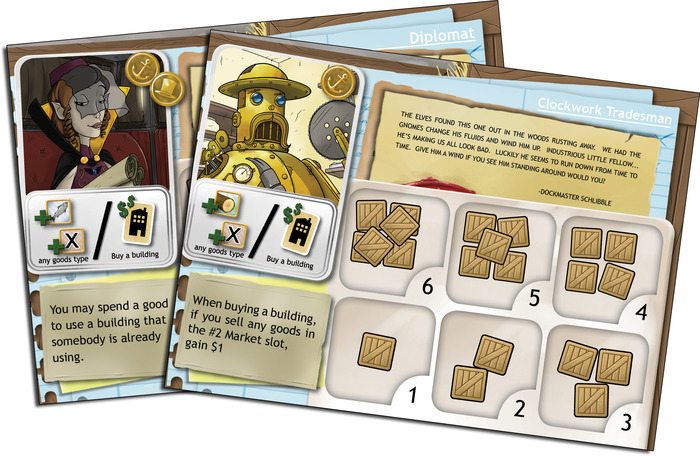
The Verdict
I like to think of Harbour as Tiny Epic Le Havre. Le Havre is a highly-rated worker-placement game that takes place in a harbor, and both games involve purchasing buildings and moving a single worker from building to building to take actions. However, Le Havre takes 2-3 hours to play, and furthermore does not involve undead Bookkeepers and dwarven architects.
I’m impressed with the way Harbour takes Eurogame mechanics and condenses it down into a quick-playing game. Since you only have one worker who moves around from building to building, it reduces the amount of analysis paralysis, but the number of buildings available to use (which increases as the game progresses) ensures that you have a few options and are never stuck with nothing to do.
The market board is a really cool mechanic that simplifies the idea of supply and demand. You shipped a bunch of livestock, so you met demand, so now the price of livestock drops. Meanwhile, the goods you didn’t ship rise in price because people are still waiting for those. What it means in game terms is that you’ll need to pay attention to what your opponents are amassing (and guess what they’re going to sell), so that you’ll have something of value when it comes time for you to ship goods. For instance, if I notice that another player has 5 fish and fish are in the $5 slot, then I probably want to start collecting some other good that will rise in price after the sale. That, or plan on finding a building that lets you manipulate the market.
I haven’t gotten to play Harbour very much yet, so I haven’t seen all of the buildings and characters in action, but there’s enough variety that your strategy each game will depend on what’s available—and, of course, what your opponents are doing. I wanted to get a review posted so you’ve got time to check it out and take advantage of the early bird special, but it looks like a great value for the $20 price tag. I love the rise of small games, because it means I can fit more games into my bags when traveling, and I’m looking forward to including Harbour in that collection.
For more about the game, including the full rules and the stretch goals, check out the Harbour Kickstarter page.
Disclosure: GeekDad received a demo prototype of this game for review.





